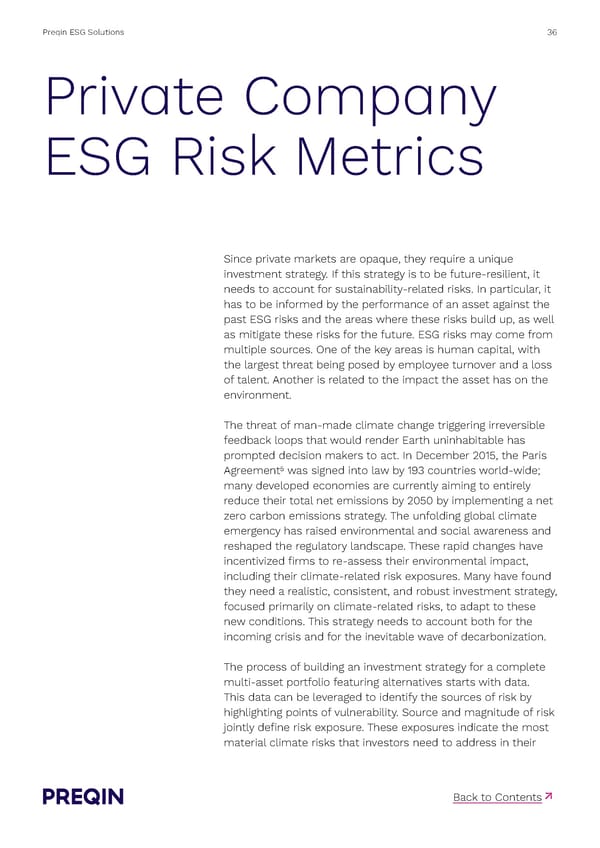Preqin ESG Solutions 36 Private Company ESG Risk Metrics Since private markets are opaque, they require a unique investment strategy. If this strategy is to be future-resilient, it needs to account for sustainability-related risks. In particular, it has to be informed by the performance of an asset against the past ESG risks and the areas where these risks build up, as well as mitigate these risks for the future. ESG risks may come from multiple sources. One of the key areas is human capital, with the largest threat being posed by employee turnover and a loss of talent. Another is related to the impact the asset has on the environment. The threat of man-made climate change triggering irreversible feedback loops that would render Earth uninhabitable has prompted decision makers to act. In December 2015, the Paris Agreement5 was signed into law by 193 countries world-wide; many developed economies are currently aiming to entirely reduce their total net emissions by 2050 by implementing a net zero carbon emissions strategy. The unfolding global climate emergency has raised environmental and social awareness and reshaped the regulatory landscape. These rapid changes have incentivized 昀椀rms to re-assess their environmental impact, including their climate-related risk exposures. Many have found they need a realistic, consistent, and robust investment strategy, focused primarily on climate-related risks, to adapt to these new conditions. This strategy needs to account both for the incoming crisis and for the inevitable wave of decarbonization. The process of building an investment strategy for a complete multi-asset portfolio featuring alternatives starts with data. This data can be leveraged to identify the sources of risk by highlighting points of vulnerability. Source and magnitude of risk jointly de昀椀ne risk exposure. These exposures indicate the most material climate risks that investors need to address in their ↗ Back to Contents
 Preqin ESG Solutions Methodology Page 35 Page 37
Preqin ESG Solutions Methodology Page 35 Page 37